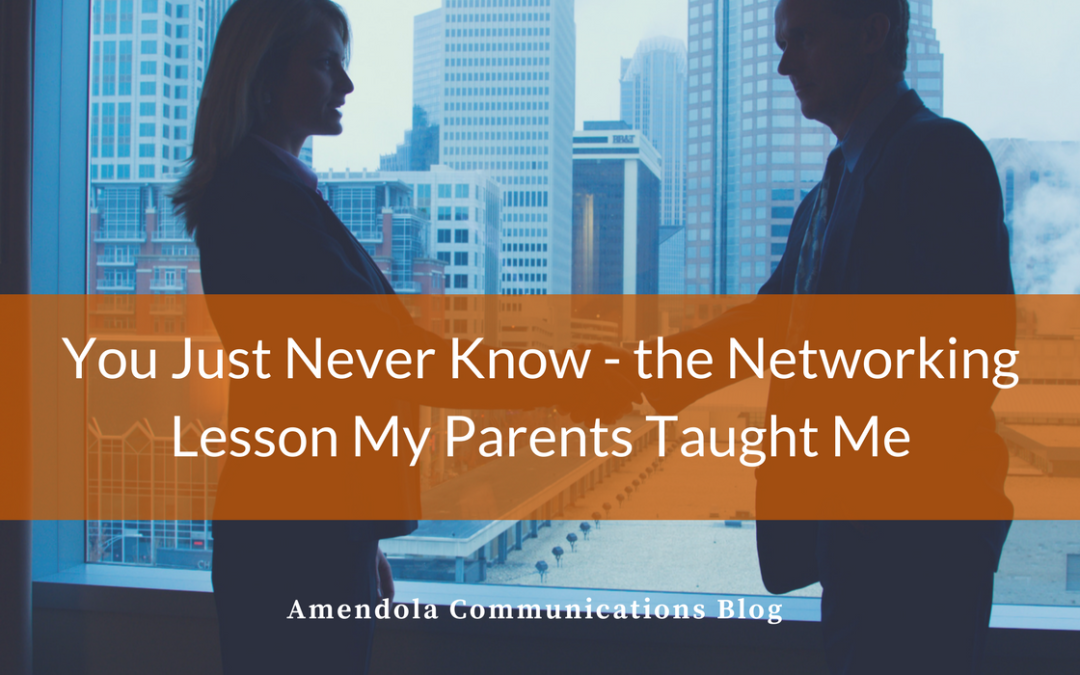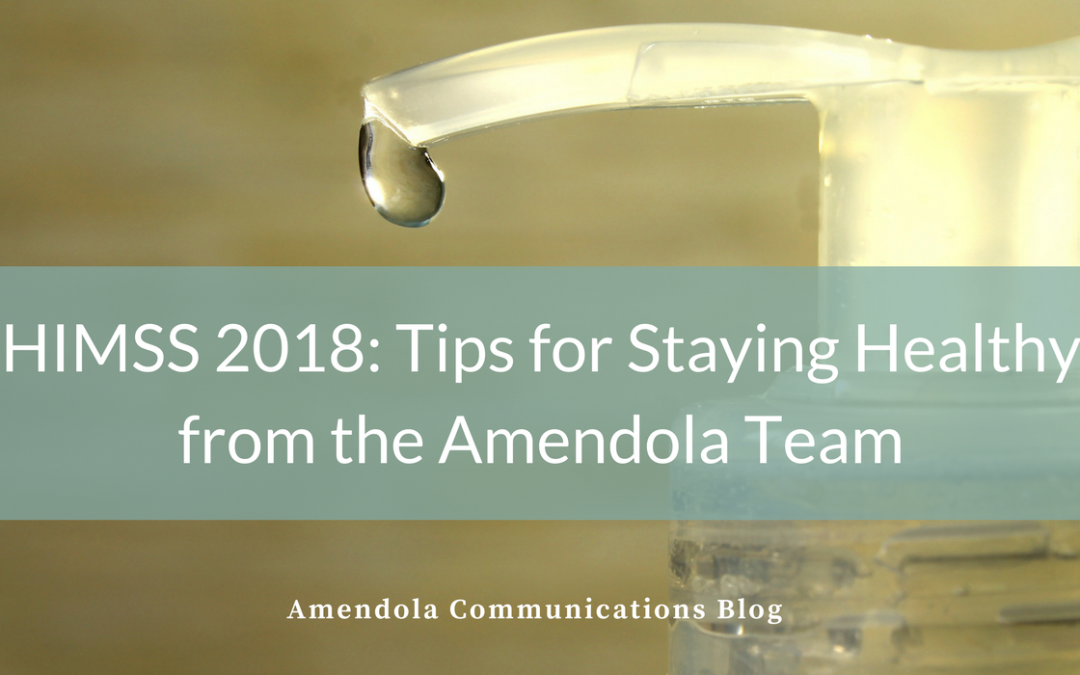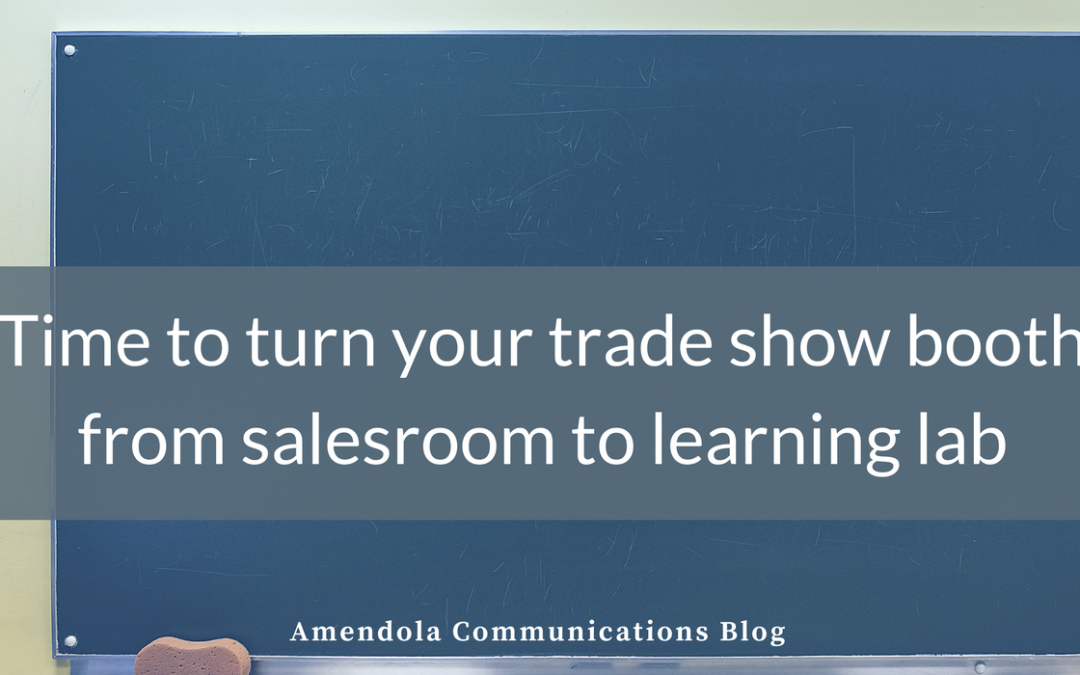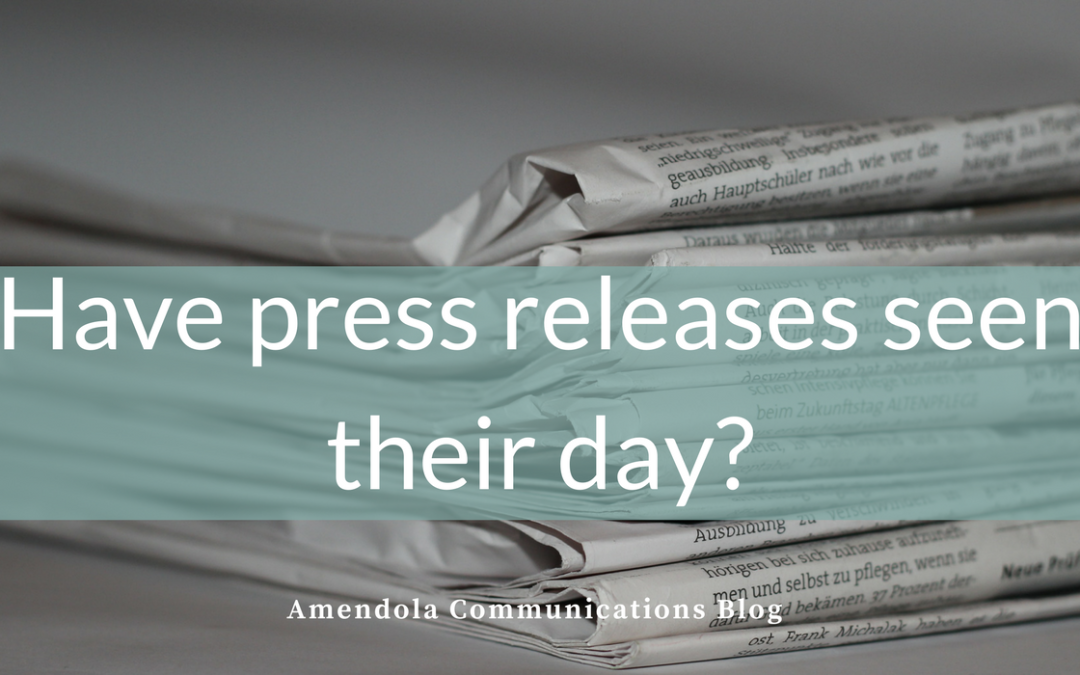by Matt Schlossberg | Mar 21, 2018 | Blog
Before social media, cross-platform campaigns and general business trends toward greater economy and efficiency of services, public relations and marketing though often collaborators were two distinct disciplines. Despite a kind of “kissing cousins” relationship, each had its own mission and purpose.
In today’s world, however, public relations and marketing are connected in ways that are both complex and granular. How effectively these well-blended professions work together is key to positively and creatively positioning your business for success.
Two Faces or a Vase?
It used to be that marketing handled advertising and PR handled earned media. Both jobs required that they make the business look good. That’s still true today kind of. It depends on how you look at it, and even then it can be hard to explain.
Let’s start with a visual the Rubin’s vase. This is a rather famous optical illusion that is usually depicted as a simple black-and-white image that can be interpreted differently depending on who is looking at it. One person looking at the image may see the shape of a vase, while another might glimpse two faces in profile facing each other. The person who sees the face can eventually see the vase, and the person who sees the face can see the two profiles, but neither person can they maintain both images concurrently.

This is what PR and marketing used to look like. Marketing helped move the company’s product (two faces), while PR sold the “vase” in the form of the company’s brand and reputation.
Today, those distinctions are not as stark. Businesses are expecting their PR and marketing teams to find a way to see two faces and a vase at the same time. Like never before, PR and marketing need each other to help a business succeed.
A Distinction without a Difference?
OK, so the average business executive may not really care about whether PR and marketing represent a single entity or distinct areas (after all, they care about results, which as we know, always fall freely from the magical Results Tree). It’s OK we’re used to it.
But you should care. More than anyone else in the company, the PR and marketing teams orbit in close and consistent proximity to your customers. Understanding how they best work together can make or break a business. If they are not on the same page, your company will not be on the same page with the customer.
You do the math.
The Content Example
One of the reasons why PR and marketing are “colliding” is that in today’s environment content is king. Byline articles, blog posts, tweets, status updates, e-mail blasts. It seems that every new piece of content is “old” by the time the final stamp of approval is given.
Campaigns highly customized to the business or even a specific initiative within the enterprise maximize your business’s core messages. But they also act in a way to bring a measure of control, discipline and meaning to the tsunami of content most businesses need to produce to stay relevant in hyper-competitive industries.
The success of these campaigns often hinges on how well marketing and PR work together.
With any initiative, the Golden Rule is “early and often.” This means that your PR and marketing pros need to engage early and often in order for the client to enjoy the end result (capitalizing on the success of a campaign or initiative).
PR and marketing teams feed on data both internal (from sales, product developers, c-suite executives) and external (customers and market shifts within the industry). That data will ultimately define the functional aspects of a campaign (the best vehicles and channels to reach prospective customers) and the emotional resonance (how the precise positioning of a message impacts a customer and their willingness to buy from and stay loyal to the business).
Final Thoughts
When I start with a new client, one of my first goals is to get to know the marketing team and what they are working on. I also ask to engage with the sales team. What are customers connecting with? How do they interact with the company? And I don’t accept stock answers. I drill down. Sometimes, a turn of phrase or just the right word can be the different between a lost sale and a signature on the dotted line.
Years ago, I might not have thought to do this. Today, I understand that the data I acquire from them will inform the shape of my PR campaign. I also understand that my PR campaign will affect everything on their side from sales presentations and the keywords and phrases used in a brochure to social media campaigns and the priorities on the content calendar.
Marketing and PR, while still very much distinct, are travelling toward the same goal and often taking the exact same road. There are the occasional places where the two diverge, but understanding those subtle differences is where true collaboration and the success of your business lies.

by Jodi Amendola | Mar 14, 2018 | Blog
Some people network the traditional way. They attend networking events, dinners, and happy hours. Or they join membership organizations, serve on boards, etc.
The planned socials are not really my thing, though. Rather, I have built much of our public relations agency’s success on being open to engaging others, at just about any time, place or event. That’s a lesson I learned from my mom and dad!
They always pushed me to talk to everyone. I can still hear my Dad say: “Go talk to him. You never know where it will lead!” and “Go say “hi” to her. You never know who she knows.”
Not surprisingly, my parents were right and today it’s a philosophy I live by: network with everyone. You just never know! I have built my business on the unintentional events and truly believe that one experience leads to the next.
Here’s a great example. I recently received a LinkedIn note from someone looking for a national healthcare/pharma PR agency; her CEO had suggested she meet with me. Of course, it felt great hearing that the CEO remembered me and our high quality work especially since it had to be at least 12 years ago that he engaged us.
A meeting was scheduled. We barely got into the office when the lady said, “I can’t believe how you and Michael met. What a funny story!” To be honest, I had totally forgotten but when she gave me some details, it jogged my memory and wow, it was a good story!
Michael and I met at a car wash. Yes, a car wash!! It was a Friday afternoon and we were both waiting for our cars to be done. My mom, who was with me, engaged Michael in conversation. When she learned he was in healthcare she proceeded to sell him on my services!
There are not too many people in the healthcare/healthcare IT/pharma public relations space in Arizona, and Michael was impressed that I knew the lingo. We exchanged cards and met the following week at Starbuck’s. We did some project work for them and then lost touch … until now.
Here’s another example. Jim R. was a neighbor of mine. We were chatting at a pool party and became family friends. He was an entrepreneur and encouraged me to start my own business. I had been thinking about doing just that, and Jim’s encouragement gave me the extra push I needed. He also became a client and remains a good friend today.
And one more example one of my favorites–about how I met Gregg C. in the taxi line at the Dallas airport. In town for the HIMSS convention, along with tens of thousands of others, the line stretched on forever. Finally, the man managing it all yelled out, “Anyone else going to the convention center?”
Gregg and I got into the same taxi (pre-Uber days, of course!), and soon fell into conversation all the way into the city. It turned out Gregg was a top exec at Intel, and also from Arizona. At the time, I worked for a different healthcare IT PR agency, and Gregg said that Intel might need some specialized healthcare PR. He introduced me to a colleague, Chris, and the rest is history Intel’s Internet healthcare division became one of the agency’s clients.
But it gets better. I invited Chris to an event. She brought her colleague, Kate. I remained friends with Kate long after the engagement with Intel ended. In fact, years later when I launched my own PR agency, I reached out to Kate, and hired her to start our marketing department. Now, 14 years later, Kate is a vital part of Amendola, still leading our marketing efforts and so much more!
Networking has continued to build Amendola Communications. It was about eight years ago that I got a call from Jim G. He looked me up because I led his company’s PR efforts decades before. We not only re-connected but became great friends, attending HIT meetings and network events together, and cross-referring business leads.
Jim referred me to so many great HIT influencers that today, I rarely participate in RFPs. I don’t need to. Between my many years in the business, networking with editors, clients, and others, business leads just come in.
Of course, it is also a testament to my team and the agency that we have so many repeat clients: Doug, a four- time Amendola client; Jay, a three- time Amendola client; Brett, a three-time Amendola client; Steve, a two-time Amendola client; Michele, a two-time Amendola client; Laura, a two-time Amendola client. And the list goes on and on.
Mom and Dad were right. You just never know what that one connection will lead to! Why not connect with us today? At the very least, you’ll have a free, no-obligation consultation with the healthcare IT industry’s leading public relations agency. Shoot me an email at jamendola@acmarketingpr.com. I can’t wait to hear from you!

by Ken Terry | Mar 7, 2018 | Blog
When health IT professionals head to HIMSS, interoperability will be a major issue, as it has been for many years. Various interoperability solutions are always on the horizon, but never quite come to fruition. The reasons go beyond technological capabilities; healthcare organizations and IT vendors have simply not been able to think outside the box of their preconceived notions.
A classic example is the recent announcement by a very large EHR vendor of new enhancements to its interoperability solution that allow providers who use that EHR to collaborate across organizational boundaries. Now, it’s all to the good that a clinician in one healthcare system will be able to not only view patient data in a different system’s EHR, but will also be able to schedule appointments more efficiently and message providers in the other healthcare system about a particular patient.
However, a user of that EHR will still not know that a patient got a flu shot at CVS or was admitted to a hospital ED that doesn’t have that EHR. In fact, except for the exchange of hard-to-parse clinical summary documents, the provider won’t know about anything that happened to the patient in care settings with disparate EHRs.
The central problem here is that the major health IT vendors would like their customers to use only their products and no one else’s. They’ve managed to convince some organizations that “rip and replace” is the solution to their interoperability ills. It is, however, no panacea. Aside from being a very expensive approach that disrupts the organization for a year or more, a unity system cannot provide all the functionality that healthcare organizations need, and the big vendors are not very amenable to connecting with third party app vendors.
The advent of Fast Healthcare Interoperability Resources (FHIR) promises to allow EHR users to expand their functionality through third party apps without having to pay for special interfaces. To their credit, the big vendors have shown some flexibility by letting outside vendors play in their digital sandboxes and develop FHIR-based apps. However, the majority of these apps are being used mainly for viewing EHR data. Moreover, FHIR has still not solved the problem of EHR-to-EHR interoperability.
So what is to be done? I’d suggest that, for starters, ONC and the private consortia working on interoperability consider a different role for EHRs that was suggested by Mandl and Kohane in a New England Journal of Medicine article. In that piece, the authors predict that with the spread of open standard software APIs, EHRs might become commodity components in a larger platform that includes other transactional systems and data warehouses running myriad apps. These apps could have access to many sources of shared data beyond a single health system’s records.
To visualize what this means, think about all the apps you have on your smartphone. Many of these apps work together. For example, Uber uses your GPS to figure out your location, as do shopping and movie apps. Your calendar app knows what time it is in your time zone.
If an EHR could contextualize all of the data coming into it from different apps, and combine them in ways that support medical decision making, it would be a much more useful program. It would maintain its role as the center of clinical workflow and documentation, but outside apps could also improve those functions, making the EHR more usable for clinicians.
That’s all very fine, and the same system might be used to expose EHR data to apps that consumers could use to monitor and maintain their health. But how do we achieve interoperability between EHRs?
I don’t presume to have the answer, but I have a couple of suggestions. First, health information exchanges need to step up their efforts to link together healthcare providers that use different EHRs. Some HIEs have focused on providing more analytic support to customers, which is certainly important but doesn’t meet the need to make a broad range of outside data available within the EHR workflow. To the extent that HIEs expand the types of data they can exchange, they will become more valuable. And if they adopt the emerging FHIR-based APIs, they will eventually find ways to exchange relevant data at the granular data level.
Interoperability at a granular, discrete data level must move beyond interfaces between disparate systems, which are too expensive to set up and maintain. The holy grail would be to develop the ability for EHRs to generate some kind of standard data set far more extensive than today’s CCDAs that would be both machine readable and understandable to clinicians using any other system. Perhaps FHIR could do that someday, but it would still require some kind of universal network to distribute the data. Maybe blockchain or some other secure peer-to-peer system will meet this challenge.
That’s all my crystal ball shows me today. But if the past is any indication, something totally unknown lies outside the box of the future.

by admin | Feb 21, 2018 | Blog
Back in 2016, the Amendola Communications team collaborated on a blog post offering tips on how to stay healthy at HIMSS. With HIMSS 2018 coming up right as the U.S. in the midst of a flu epidemic, that sage advice is even more apropos.
You’re about to find yourself in a largely environmentally closed room with 42,000 of your industry compatriots. Many of those folks first walked through an airport and shared the same recirculated air in a jam-packed jet. It’s like a scenario from a disaster movie.
Even without all of that, it’s still a physical and mental marathon. It’s five straight days of being on point, on message, and on your feet. It’s HIMSS! To help you survive it, and perhaps avoid becoming one more tick in the flu statistics this year, here are some tips from the team at Amendola, who have years of HIMSS conferences under our belt.
Michelle Noteboom, Senior Account and Content Director: Assume you won’t get eight hours of sleep a night but find a way to get at least six. Make sure to drink a ton of water, which helps to hydrate you from all those late night adult beverages, and, seems to help a bit with swollen feet. Assume your feet will be swollen and your shoulders aching from lugging all the trinkets you collect from exhibitors. To that end, don’t forget Advil and Band-Aids for your feet. Bring healthy snacks for your hotel room, and finally, don’t skimp on coffee. That weak hotel room stuff doesn’t cut it when you have to be “on” for 18 hours straight. HIMSS requires a Venti Starbucks!
Margaret Kelly, Research Coordinator: Bring an emergency kit. For women, pack a clear-plastic and easy-to-get-to bag full of small amounts of Tylenol (or pain reliever of choice), Tums, “handitizor” (as my granddaughter calls it), bandages for the shoe blisters, safety pins, Chapstick, protein bar, and breath mints. The men’s version just substitute the safety pins with duct tape, and a fanny pack for the plastic bag!
Todd Stein, Vice President: Be sure to schedule time for lunch. Many people fill up their schedules without remembering to leave time for eating. Me, for instance. Every darn year.
Amy Koehlmoos, Senior Account Director and Resident Germaphobe suggests bringing the following:
- Raw almonds (they’re small, portable, healthy and provide good energy)
- Anti-bacterial wipes (for the trays, arm/head rests in the plane; and the faucets, door handles, light switches in the hotel room)
- Small Ziploc baggies (I put remote controls in these as those suckers are the #1 place for nasty germs in hotel rooms!)
- Hand sanitizer (you shake lots of hands at these events!)
- Earplugs (help you get a good night’s sleep in a hotel, where there are often weird sounds and loud neighbors)
- Shoes with arch support (my philosophy is you look better wearing an orthopedic pair of shoes with confidence than you do limping around with a pained expression on your face and a pair of sassy heels on your feet)
- Phone/connections to loved ones (mental health is important and having easy access to pictures of family and the ability to Facetime them at night makes it a bit easier to be away from home).
Ken Krause, Senior Account and Content Director and our other Resident Germaphobe:
- Drive instead of fly. Planes are breeding grounds for germs, and they keep recirculating.
- Assume everything you’re about to touch has been previously touched by a small child with a runny nose. Proceed accordingly. That goes double for your hotel room.
- Eat like your significant other is there watching you. Nothing good comes from visiting the snack machine.
- Try not to touch your eyes or nose after touching a common surface such as a doorknob until you can either wash your hands or use a cleanser such as Purell.
- Get to sleep as soon as you can rather than staying up watching TV or reading. Sometimes business travel calls for working on minimal sleep, but don’t go out of your way to get into that state.

by Stephanie Janard | Feb 14, 2018 | Blog
“Be sure to bring back lots of product literature from the trade show,” said no one ever.
As my colleague Lisa Chernikoff pointed out in a recent blog, people simply don’t go to trade shows to buy your product. They go to learn. But when they approach your booth, what do they see to compel them to stay and learn something new? If you’re drawing a blank, it’s okay. That’s what this blog post is for: to show you some new ways to draw traffic in your booth and impart meaningful information that will “stick” with attendees well after they leave.
Strategy #1: Instead of a banner announcing your product or company, announce that “class is in”
Does your company address patient engagement, value-based care or some other hot concept in healthcare? Consider making your entire booth a class in this concept, with the appropriate banner, such as “Value-Based Care 101” or “Patient Engagement Pop-Up University.” And sure, by all means include “presented by (your company)” or your company logo. But make sure this is the secondary, less prominent message.
Strategy #2: Instead of a demo, offer a class or game
Once you’ve attracted the attendee’s interest with your signage, be sure to make good on its promise. Offer attendees an experience that imparts valuable knowledge to them. Here a customer champion can be recruited to give short 20-minute presentations about their success in addressing the theme of your booth, such as value-based care or patient engagement. To capture leads, have attendees register for the session. Make sure this isn’t a product pitch, though. While some mention of your product can be given, attendees want to hear a real world story from their peer not an infomercial.
A quiz that asks provocative questions paired with equally provocative answers is another effective way to make knowledge (and by extension, your company) “stick” with an attendee.
Even a standard product demo can be upgraded to a more experiential event. In one example, Medicomp, an Amendola client, takes attendees through a virtual experience in the form of a game, which is essentially a 3-minute product preview. It highlights the key capabilities and product features, as well as the streamlined user experience, in the context of winning a prize rather than buying a product. The experience gets attendees interested in learning more and helps to weed out the wrong people so the Medicomp team knows when it’s appropriate to invest time in a full demo.
Strategy #3: Instead of brochures, put out case studies, guides and other learning material
It’s not that product literature doesn’t have its place, but on its own, a brochure is most valuable to pack rats who can’t stand to throw anything away. But as Chernikoff bluntly notes in her blog, even that fate is unlikely.
“Nobody wants your marketing brochure! It will end up in the next trash can even if they take it, and if it makes it back to their room, it will end up in the hotel trash can. They also really don’t want a folder with multiple product one-pagers and a recent press release about your new product,” she writes.
A better idea, Chernikoff continues, is to give attendees material such as case studies that illustrate real-world scenarios while highlighting your unique value proposition. I would add to that guides, how-to’s, checklists and other learning material that, collectively, will make the reader far more knowledgeable on a topic than he or she was before.
Of course, the material should be compellingly written so that it will actually be read and if you are going to invest in producing this material, it’s wise to also invest in a professional writer to write it.
We’ve created a number of such pieces for various clients to use at their trade shows, including a compilation of “user tips and strategies” for Bayer to hand out at RSNA; a brief on new technology services and trends for the lab for 4medica to distribute at the Lab Confab; and case studies for our client HealthBI to pass out to attendees at a regional conference.
Strategy #4: Instead of cheap tchotchkes, raffle off a quality and related prize
In keeping with the educational theme of your booth, how about raffling off a mini-library of interesting books on the topic your booth addresses? (All the better if your company authored one of the books!) You could open up the raffle to anyone, or narrow it down to attendees of your various learning sessions. Be sure to offer to ship some or all of the books for free, as traveling with more than a few will be difficult for most attendees.
Another idea: give attendees a thumb drive titled “Teach Your Own Patient Engagement Class” or “Value-Based Care 102” or something similar that is stocked with educational content.
In conclusion, keep in mind that an educational trade show booth also aligns well with today’s information-hungry buyers. You’ve likely heard that when it comes to big ticket items, most people have made up their mind what they’re going to buy and from whom–before they actually reach out to a vendor. This is why so many companies have an educational, content marketing strategy in place today, and why it makes sense to take a similar approach with your tradeshow booth. Make it a place of learning and watch the traffic and good leads follow.

by Marcia Rhodes | Feb 7, 2018 | Blog
Entrepreneur recently ran a scathing article blasting press releases titled, Is Sending Out a Press Release Really Worth the Money? The article questions the value businesses receive from issuing press releases, calling releases “borderline useless,” serving mainly as a way for PR agencies to fleece clients.
I beg to differ.
As someone who has been in PR her entire life (we’re talking 3+ decades), I have seen numerous benefits from press releases when done right. I have even seen how they optimize SEO, as long as you follow a few best practices, which I’m happy to share in this blog.
Among the accounts I currently handle, one issues a single press release per year, while another issues one per month. Guess which one gets a lot more press coverage?
Perhaps I seem a bit defensive given I work for a PR agency. Fortunately, several of my colleagues are former reporters and editors themselves.
Here is how they view press releases:
Michelle Noteboom, senior account & content & director (former health IT blogger and columnist)
How else can you communicate to the industry what’s going on? For example, announcing new clients (so that prospects and competitors know you are growing), new product updates (especially if they are innovative) or new funding.
Press releases can also help attract traffic to your web site so you can communicate even more about your company and offerings.
However, if you have nothing but fluff to report, I agree that you should not do a press release!
Brandon Glenn, content & account director (former editor, Medical Economics)
As a former reporter, I can say with certainty that journalists still pay attention to press releases and find them a useful tool to stay informed about the companies and industries they cover. Press releases are by no means the be-all-and-end-all of PR tactics; they alone aren’t going to create record-breaking sales numbers. They’re merely one tool in the toolbox and a generally useful one as part of an overall strategy to generate awareness.
Ken Krause, senior account & content director (contributing editor for a sports magazine)
Well-written press releases are a great way to organize information. They help companies think through how to present their stories and messaging, and deliver them in a manner that’s easy for reporters, clients, and prospects to absorb. They provide more depth when pitching reporters the pitch can highlight what’s most newsworthy while the press release can deliver more details as to why it’s newsworthy. If you use a wire service, they also guarantee that the news will be out on the web so it can be discovered in a search.
There is one other value, and that is in placing it on your web site in the news section. Job candidates and sales prospects use web sites for company research, and a lack of news makes it look like not much is happening. Having a full and active newsroom creates a positive impression of your organization.
Chad Van Alstin, content & media relations manager (former editor of a health IT magazine and a sports publication)
To be frank, as an editor, I thought only a small percentage of press releases were worth immediately writing a story on.
But, that’s not their true value. Press releases are useful for the dissemination of information, and are a great way to keep journalists apprised of relevant news. More than that, they’re a good reminder for journalists that your company exists and its leaders are available for comment when the need arises. Lastly, press releases serve the function of boosting SEO through shared publication.
Not all of these benefits can be quantified and measured, and the benefits certainly aren’t true for every release I’ve seen some bad ones. But, in general, a press release is a great tool that is as valuable in the new media, Internet era as it was during the days of print.
Tips for writing SEO-powered press releases
In order to maximize the ROI from issuing a press release, be sure to do the following:
- Spend the time creating a powerful headline and subhead. Headlines should be under 100 characters to make it easily shareable on social media. Include the most important information in the first 50-65 characters, because that’s typically where Google cuts off the headline preview.
- Be sure to use keywords in the headline and lead paragraph. You never want to stuff keywords into a release (Google punishes that), but when you write naturally and have a good focus, keyword optimization will fall into place.
- Use variation in the text to break up blocks of text. One way to improve SEO is to make changes to the text that draws the user’s eye, and helps the information be absorbed more easily. Use bulleted or numbered lists, subheads, bolding and italics.
- Include no more than three links per release. It’s important not to have too many or Google starts suspecting your content of being link spam. Did you know that duplicate links can hurt your SEO? This is why it’s best not to link to the company name in the opening sentence; save it for the boilerplate.
- Consider multimedia news releases. Including any form of multimedia in a release boosts SEO (think about how much more likely you are to click on an article that has an image vs. text only). Click here to see a recent example.
If you read the Entrepreneur article and agree with it, it could be that you are issuing press releases on a wire and hoping something good will come of it. That’s actually why you need a PR agency, to make sure the release is SEO-optimized, to do the follow-up, to see to it that the news gets in front of the right journalists. With more and more companies fighting for the attention of fewer and fewer journalists, the value of the PR agency in this process increases considerably.





